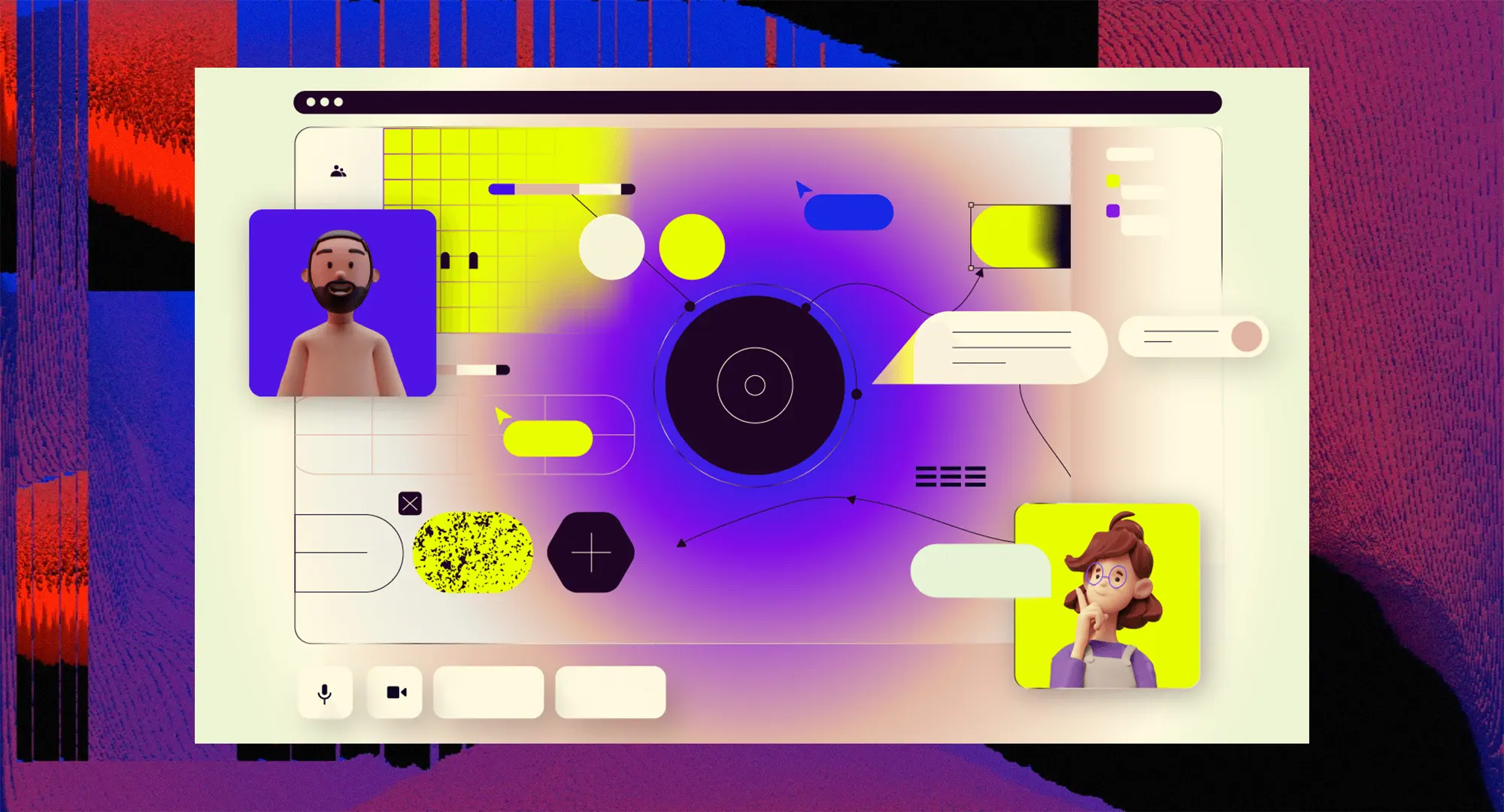
How to Develop a Competitive Retail Customer Experience Strategy
Let’s kickstart the conversation and design stuff people will love.

Having a comprehensive retail customer experience strategy is crucial for any company that wants to survive and thrive in the highly competitive retail industry. While product pricing, quality, and value still matter, providing a top-notch customer experience is absolutely paramount. Establishing a strategy that elicits a positive emotional response in the consumer across various retail touchpoints—in-store and online—can transform a casual visitor into a dedicated brand advocate.
In this article, we'll explore the essential components that make up a successful retail customer experience strategy. By understanding the importance of CX in the competitive retail landscape, companies can utilize technology to create a digital strategy that enhances brand engagement and promotes customer loyalty. As the retail world becomes more digitally interconnected, it's crucial for companies to prioritize their CX approach to stay ahead of the game.
Deeply Understand Your Retail Customer
In order to craft a retail experience that truly resonates with consumers, it's crucial for companies to have a deep understanding of their typical customers. Without this knowledge, it's impossible to create a seamless and enjoyable shopping journey that meets their needs and preferences across various touchpoints. Ultimately, putting the customer first requires an investment in understanding their wants and needs.
Fortunately, there are various tools and strategies a retail company can use to decode customer behavior. For example, it might construct a detailed customer journey map and trace the “steps” of its retail customers. Visualizing each customer interaction with the brand, from initial awareness to post-purchase support, can pinpoint customer touchpoints where customers feel engaged or experience friction.
Analyzing consumer behavior both online and in physical retail stores can also provide insights into customer preferences and tendencies. For instance, analyzing purchase history information allows a retailer to pinpoint notable patterns to anticipate and cater to individual needs.
The key is to collect data from multiple sources like online purchases, social media interactions, and customer feedback so the company can continually refine its understanding and adapt its strategies in real-time, culminating in an enhanced experience that deeply resonates with customers. Another aim is to cultivate repeat customers by fostering loyalty and long-term relationships.
Retailers that follow a direct-to-consumer (DTC) model typically find it easier to determine what their customers want because they are in direct contact with them. For more information about DTC, check out G & Co.’s direct-to-consumer growth guide.
Align Your Company Strengths With Customer Expectations
After a retailer develops a strong understanding of who its typical customer is and what they want, the next step is to align its strengths with these expectations. Doing so not only builds customer loyalty but also fosters sustainable business growth. When a company accurately identifies its unique strengths—whether in product quality, personalized service, or technological innovation—and seamlessly integrates these attributes into its customer experience strategy, magic happens.
Customers feel understood and valued as their desires are met and exceeded. Plus, an alignment like this instills a sense of authenticity, setting the stage for lasting relationships and positive word-of-mouth referrals. A powerful synergy emerges that supports the retailer's success in today's unpredictable retail environment by creating a retail experience that meets/exceeds customer expectations and leverages the company's inherent capabilities.
Analyze the Current State of Your Retail Customer Experience
Before embarking on a journey to refine an existing retail customer experience, the business should clearly understand where it currently stands in this department. Then it should continually seek to evaluate and refine its approach.
A company might start by actively seeking out customer opinions and insights via surveys, online reviews, social media interactions, and simple digital options like thumbs-up/down buttons, rating scales, and comment boxes. These channels can provide invaluable feedback highlighting positives and areas that need improvement.
Additionally, a retailer can employ customer journey mapping to visualize all of the current interactions between its customers and the brand. This process can help identify crucial touchpoints and potential pain points, enabling the company to better understand consumer needs and expectations. By analyzing this data, it can more easily spot opportunities to improve the customer journey, optimize processes, and create more satisfying experiences.
By knowing where these interactions come from, a company can make definitive improvements and ultimately develop a more competitive and customer-centric strategy that sets it apart from others in the retail space.
Set Clear Customer Experience Objectives
Setting specific and measurable customer experience objectives is important because of the guidance and clarity they provide. Clear and quantifiable goals or milestones act as a roadmap for retailers, delineating the path toward enhanced customer interactions, streamlined processes, and optimized services. Furthermore, they provide a robust framework to evaluate the success of customer experience initiatives, allowing retailers to gauge their progress, make data-driven adjustments, and cultivate lasting relationships with their clientele.
Companies should align these objectives with their overall business goals to ensure cohesiveness and a purposeful approach that impacts consumers positively. In a time when customer loyalty is synonymous with business prosperity, well-defined customer experience objectives serve as the cornerstone upon which retail success is built.
Create a Customer-Centric Culture
Fostering a customer-centric culture within a retail organization is not merely a strategy but a pivotal paradigm shift that underlines the very essence of business success. At the heart of this transformation lies the realization that employees are the catalysts for exceptional customer experiences. Their interactions, attitudes, and dedication shape the narrative customers carry with them long after leaving the store, hanging up the phone, or exiting the chatbox.
This assertion is hammered home in the graph below by leading retail customer experience firm G & Co. When asked the biggest reason why they wouldn’t purchase from a specific brand for a second time, consumers responded with poor customer support between 9% and 19% of the time. The fact is that a negative customer service interaction can leave a lasting taste in someone’s mouth—so much so that they never return.

Investing in employee training, particularly in enhancing soft skills, allows retailers to empower their workforce so they know how to proactively address customer needs, resolve issues with finesse, and build genuine rapport. The rewards of such an approach ripple far beyond the sales counter.
Furthermore, a customer-focused culture breeds an environment where positivity thrives, both for the customers who feel valued and understood and the employees who derive satisfaction from their meaningful contributions. In this symbiotic relationship, retailers secure customer loyalty and nurture a sense of purpose among their staff, ultimately fortifying their brand's position among all the others.
Consider Personalization in Retail Customer Experience
Personalization has emerged as a key component in shaping quality customer experiences in today's fast-paced retail world. Consumers have come to expect tailored interactions that cater to their unique preferences and desires, dramatically increasing the significance of customization in modern retail.
But now retailers hold the power to harness the wealth of customer data available to them. They can leverage advanced analytics and AI-driven technologies to craft finely-tuned marketing messages, personalized offers, and product recommendations to boost conversions. Using all this data, they can also forge deeper connections with customers, which increases customer satisfaction and loyalty.
One unique way a retail company can personalize its services is by offering a shop-by-appointment option. This way, customers can shop in the comfort of their own homes but still interact directly with an associate on their terms.
The Role of Technology in a Strong Retail CX Strategy
Nowadays, technology plays an absolutely essential role in creating meaningful customer experiences. Companies can truly revolutionize their consumer interactions and streamline their processes by embracing emerging digital tools and technologies like chatbots, artificial intelligence (AI), and augmented reality (AR).
These newer technologies enable brands to offer seamless and personalized experiences that cater to each individual. Plus, they create new and exciting ways for customers to interact with retailers. AR, for example, allows brands to devise original, immersive, and captivating ways for consumers to engage with their products before making a purchase decision.
When cultivating the perfect digital retail customer experience, companies can utilize various technologies like AI-driven chatbots that handle customer questions quickly, expedite transactions, minimize wait times, and create other efficiencies.
Embracing an Omnichannel Retail Strategy
Many successful retailers have used technology with an omnichannel retail strategy to elevate their customer experiences. Take Amazon, for example. Known for its seamless online shopping experience and personalized product recommendations, the online retailer has consistently leveraged technology to improve its website and services' convenience and ease of use.
On the other hand, companies like Nike have masterfully integrated their brick-and-mortar stores with digital innovations that allow consumers to customize in-store and online products, ensuring a cohesive and tailored journey across channels.
Starbucks is another good example of a retailer that has integrated digital with physical to upgrade its consumer experience. The coffeehouse chain has fused its mobile app with its physical locations so customers can order and pay ahead, providing great customer service by reducing wait times.
Today’s discerning customers demand a harmonious journey along all touchpoints regardless of the platform, whether shopping online or visiting a physical store. Successful retailers understand that a uniform, high-quality experience across all channels translates into stronger brand loyalty and increased customer satisfaction.
Measuring and Analyzing Customer Experience Metrics
Retailers must measure and analyze customer experience metrics effectively to see how they’re doing and where they need to improve. Key metrics, including Customer Satisfaction (CSAT) and Net Promoter Score (NPS), offer valuable insights into customer perceptions and loyalty.
CSAT, in particular, gauges overall customer satisfaction so businesses can pinpoint any trouble areas. Meanwhile, NPS assesses customer willingness to promote the brand, reflecting long-term success potential.
These metrics are even more helpful when coupled with the vigilant monitoring of customer feedback and reviews. This type of feedback can reveal nuanced sentiments, illuminating what drives customer preferences and dissatisfaction.
Harnessing data-driven analysis empowers retailers to make informed decisions, channel resources efficiently, and prioritize improvements that align with customer expectations. In a competitive landscape, cultivating a customer-centric approach through meticulous metric analysis lays the foundation for sustained success and helps build enduring brand-consumer relationships.
The Importance of Continual Improvement in Retail Customer Experience Strategies
These days, not one retail business can afford to rest on its laurels. Customers are looking for more even if their product quality, selection, and pricing are perfectly on point.
They want a personalized purchasing journey across various platforms that meets their needs. They want to feel heard and understood on a deep level. Essentially, consumers desire a thoughtful customer experience that stands out from all the rest.
Brands can achieve this and more if they take the time to get to know their loyal customers and their expectations, establish a customer-centric culture, and embrace new technologies, in addition to the other suggestions mentioned throughout this article. Putting a continuous effort in to keep improving will build customer loyalty over time and pay off in the long run.
Our expertise in market analysis sets us apart as we navigate complex industry details with unparalleled skill. Our comprehensive market insights empower strategic decision-making, giving clients the confidence to pursue untapped opportunities and outperform competitors.
Contact us today to bolster your efforts.






%20(1).png)




